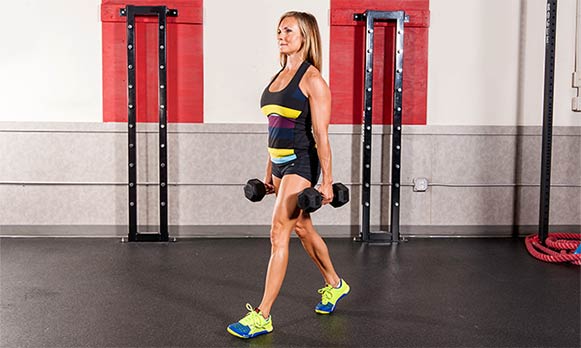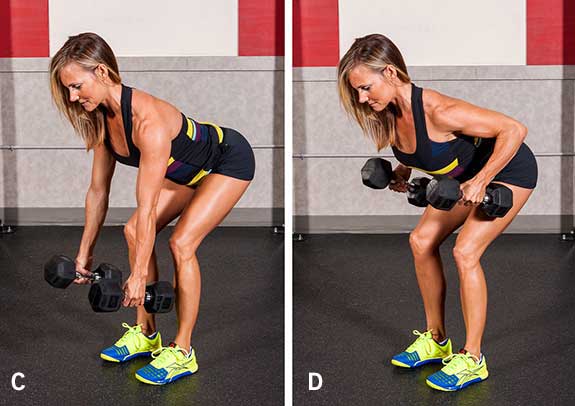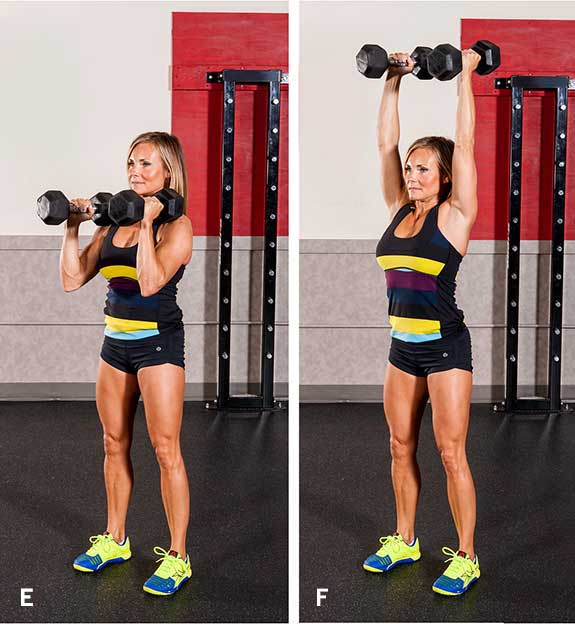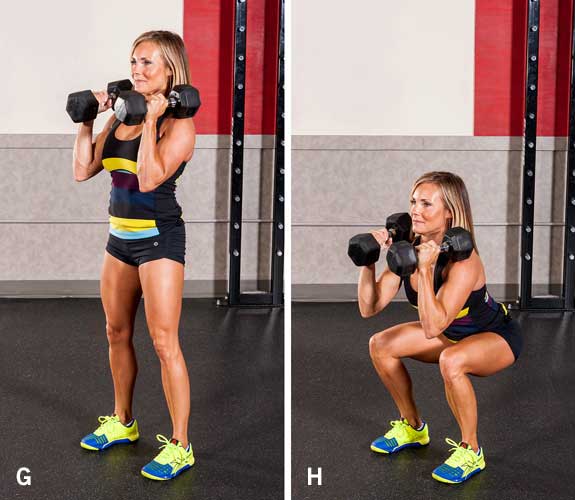
When I first cracked open Nick Tumminello’s new book, Strength Training for Fat Loss (Human Kinetics, 2014), I was encouraged by the words I spotted in the introduction: sensible, realistic, consistency, hard work. Refreshingly, the advice and training principles in this book are true to “real” fitness, taking a wide berth around fads and miracle claims often found in other titles on fat loss.
The book speaks to a range of readers. Author Tumminello—an ACE Certified Personal Trainer and CEC provider—writes that Strength Training for Fat Loss is for both beginners who need a “step-by-step guide to fat loss” and also for the “seasoned fitness professional” looking for new programming and exercise ideas. Concepts are explained in simple terms without being overly simplistic.
The exercises within are based on metabolic strength training, which the author describes in his book as “innovative strength training concepts to accelerate metabolism in order to help you lose body fat while building and keeping muscle.” Most of the book deals with exercise, with one short chapter on the basics of sensible eating and nutrition for fat loss.
Three C’s of Metabolic Strength Training
“The thrust of the book is using strength training to improve the shape of your body and using diet to reveal that shape,” says Tumminello, the owner of Performance University International in Fort Lauderdale, Fla. He has arranged his recommended exercises into three distinct metabolic strength-training categories, or what he refers to as the “three C’s of strength training for fat loss”: circuits, combinations and complexes.
- Circuits: The style used in this book is called big circuit training, which involves sequences of three, four or five compound exercises using heavy loads and alternating between upper- and lower-body exercises. For example, a Big Four Circuit would look like this: upper-body pulling exercise, lower-body leg exercise, upper-body pushing exercise, lower-body hip exercise.
- Combinations: Inspired by Olympic weightlifting, combinations blend multiple exercises to make one total-body exercise. An example given in the book is Bent-Over Row plus Romanian Deadlift plus Hang Clean plus Overhead Push Press. That would be one rep of the combination exercise.
- Complexes: With a complex, you string together a series of exercises—each performed for multiple reps—where every exercise in the complex uses the same piece of equipment. The goal is to move fast for high intensity, using lighter resistance compared to the circuits and combinations. Refer to the featured exercise in this article for an example of a complex, courtesy of Strength Training for Fat Loss.
While distinct in their training concepts, the three C’s share commonalities, as well. They’re all high intensity, using either challenging loads or lighter loads at a faster pace. They also involve whole-body training to challenge the upper body, lower body and core muscles at the same time. Finally, with the benefits of excess post-exercise oxygen consumption (EPOC) in mind, each protocol takes advantage of duration, requiring more time to complete than traditional strength-training sets.
How did Tumminello arrive at his three C’s approach? “In fitness, we’ve gotten away from principles—everything is trends and methods,” he explains. “However, principles don’t change. We know that calorie deficit works for fat loss. You can achieve calorie deficit through diet and/or exercise.”
Tumminello continues: “From a metabolic strength-training standpoint, the principle that creates calorie deficit for fat loss is intensity—that is, the more muscles you work or the longer you work, the more calories you burn. When we establish principles such as this, we can then look at what methods allow us to take advantage of those principles. That's why this book uses the three C’s of metabolic strength training.”
Each of the three C’s—circuits, combinations and complexes—is featured in its own chapter, amounting to approximately 200 pages of exercise ideas with descriptions and black-and-white photos. The exercises utilize a variety of equipment, including dumbbells, a barbell, kettlebells, cable machine, a stability ball and more.
There are also chapters on body-weight training, warm-ups and cool-downs for fat loss, and detailed workout tables that fitness professionals can use as a resource for fat-loss programming with clients.
Metabolic Strength Complex for Fat Loss
Here, Tumminello recommends the following exercise specifically for ACE ProSource readers, taken from his chapter on metabolic strength-training complexes.
To perform this Bilateral Farmer’s Walk Complex, you’ll need:
- Enough space to be able to move up and down the room
- Two sets of dumbbells—a heavier set and a lighter set. The lighter set should be roughly 50 percent to 65 percent of the heavier set’s weight. For example, if your heavier set is 80 pounds, your lighter set should be around 45 pounds.
- Two cones placed 20- to 40-yards apart, with both pairs of dumbbells at one end. You or your client will carry the dumbbells back and forth between the cones during part of this complex.
Note: The total steps described below represent one set. Perform three to five rounds with two to three minutes of rest between rounds.
The following is an excerpt from Strength Training for Fat Loss (Human Kinetics, 2014), written by Nick Tumminello. All exercise descriptions and images provided by Human Kinetics.
Bilateral Farmer’s Walk Complex

1. Farmer’s Walk
Stand next to one cone and hold two heavy dumbbells on each side of the body, with palms facing the body, either by the hips or at the shoulders (see Figure A for an example at the hips). Walk to the opposite cone and return to the starting point, keeping the dumbbells in this position while maintaining a strong upright posture (Figure B).

2. Bent-over Row
Stand next to one cone with the feet roughly hip-width apart. Hold a lighter dumbbell in each hand using a neutral grip so the palms are facing one another, keeping the hands just outside shoulder-width apart. Bend over at the hips, keeping the back straight so that the torso is parallel to the floor and the knees are bent 15 to 20 degrees (Figure C). Row the dumbbells into the sides at belly-button level (Figure D). Slowly lower the dumbbells until the arms are straight to complete one repetition. Perform six to eight reps total.
3. Farmer’s Walk (see Figures A and B)
As described previously, stand next to one cone and hold two heavy dumbbells on each side of the body, with palms facing the body, either by the hips or at the shoulders. Walk to the opposite cone and return to the starting point, keeping the dumbbells in this position while maintaining a strong, upright posture.

4. Overhead Press
Stand next to one cone with the feet roughly shoulder-width apart and hold the lighter dumbbells in each hand at shoulder level (Figure E). Press the dumbbells toward the sky, keeping the torso as stable as possible (Figure F). Slowly lower the dumbbells back to the shoulders to complete one repetition. Perform six to eight reps total.
5. Farmer’s Walk (see Figures A and B)
As described previously, stand next to one cone and hold two heavy dumbbells on each side of the body, with palms facing the body, either by the hips or at the shoulders. Walk to the opposite cone and return to the starting point, keeping the dumbbells in this position while maintaining a strong, upright posture.

6. Front Squat
Stand next to one cone with the feet shoulder-width apart and hold the lighter dumbbells in each hand at the shoulders with the elbows directly underneath the handles of the dumbbells (Figure G). Squat as low as possible by bending the knees and sitting the hips back (Figure H); do not allow the heels to rise off the floor or allow the lower back to round out. Reverse the motion and return to the tall standing position to complete one repetition. Perform eight to 10 reps total.
7. Farmer’s Walk (Figure A and B)
As described previously, stand next to one cone and hold two heavy dumbbells on each side of the body, with palms facing the body, either by the hips or at the shoulders. Walk to the opposite cone and return to the starting point, keeping the dumbbells in this position while maintaining a strong, upright posture.
Variation: It’s also possible to do this complex as a Unilateral Farmer’s Walk. To do so, perform the complex in the same fashion as the bilateral farmer’s walk, except do the entire complex using the same side. First perform this complex on the left side, rest, and then repeat it on right side. To see descriptions and photos of the unilateral farmer’s walk, refer to the Strength Training for Fat Loss book.





 by
by 






